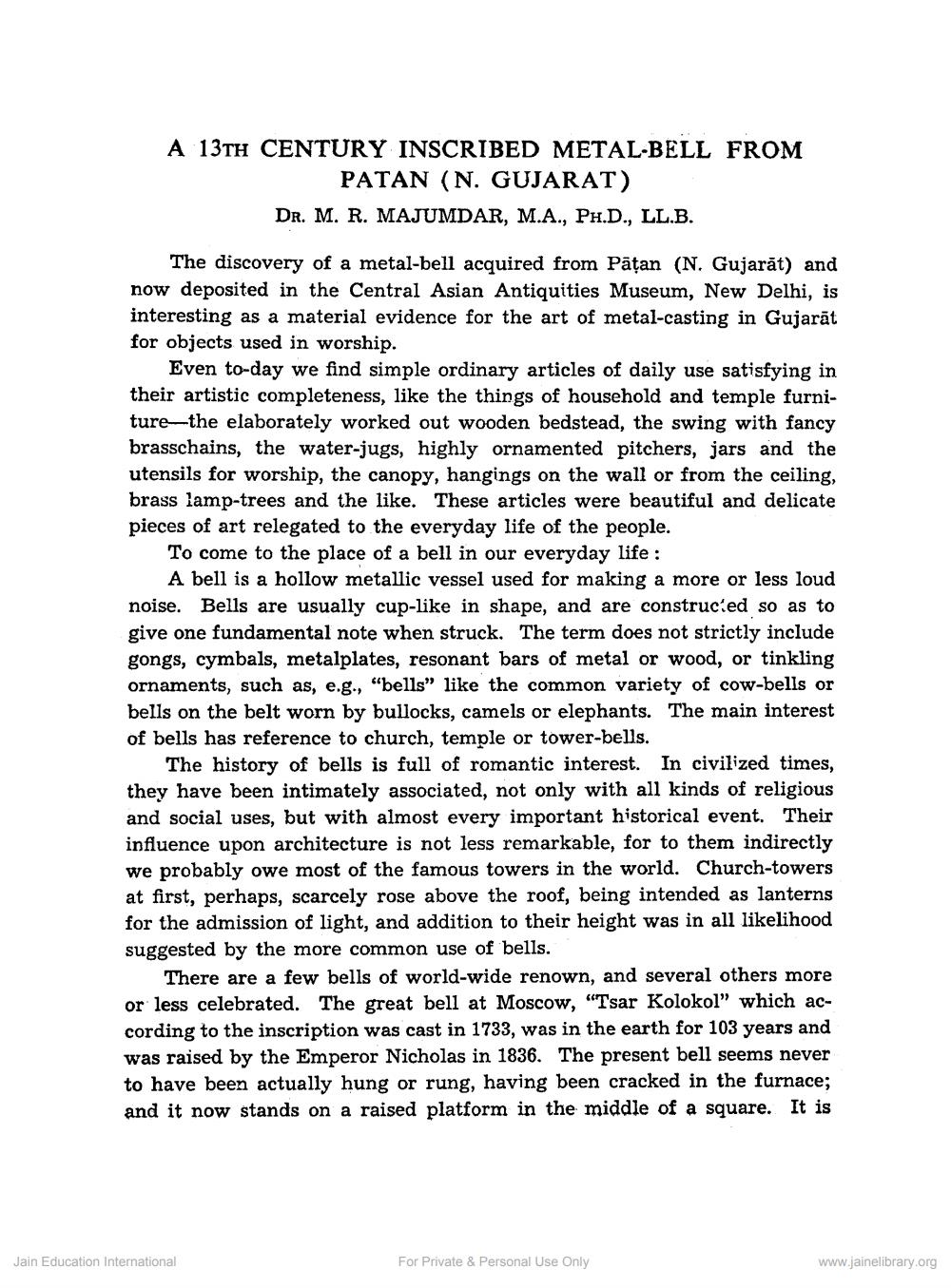Book Title: 13th Century Inscribed Metal Bell from Patan Author(s): M R Majumdar Publisher: Z_Vijay_Vallabh_suri_Smarak_Granth_012060.pdf View full book textPage 1
________________ A 13TH CENTURY INSCRIBED METAL-BELL FROM PATAN (N. GUJARAT) DR. M. R. MAJUMDAR, M.A., PH.D., LL.B. The discovery of a metal-bell acquired from Pāțan (N. Gujarāt) and now deposited in the Central Asian Antiquities Museum, New Delhi, is interesting as a material evidence for the art of metal-casting in Gujarāt for objects used in worship. Even to-day we find simple ordinary articles of daily use satisfying in their artistic completeness, like the things of household and temple furniture—the elaborately worked out wooden bedstead, the swing with fancy brasschains, the water-jugs, highly ornamented pitchers, jars and the utensils for worship, the canopy, hangings on the wall or from the ceiling, brass lamp-trees and the like. These articles were beautiful and delicate pieces of art relegated to the everyday life of the people. To come to the place of a bell in our everyday life : A bell is a hollow metallic vessel used for making a more or less loud noise. Bells are usually cup-like in shape, and are construc'ed so as to give one fundamental note when struck. The term does not strictly include gongs, cymbals, metalplates, resonant bars of metal or wood, or tinkling ornaments, such as, e.g., "bells" like the common variety of cow-bells or bells on the belt worn by bullocks, camels or elephants. The main interest of bells has reference to church, temple or tower-bells. The history of bells is full of romantic interest. In civilized times, they have been intimately associated, not only with all kinds of religious and social uses, but with almost every important historical event. Their influence upon architecture is not less remarkable, for to them indirectly we probably owe most of the famous towers in the world. Church-towers at first, perhaps, scarcely rose above the roof, being intended as lanterns for the admission of light, and addition to their height was in all likelihood suggested by the more common use of bells. There are a few bells of world-wide renown, and several others more or less celebrated. The great bell at Moscow, "Tsar Kolokol" which according to the inscription was cast in 1733, was in the earth for 103 years and was raised by the Emperor Nicholas in 1836. The present bell seems never to have been actually hung or rung, having been cracked in the furnace; and it now stands on a raised platform in the middle of a square. It is Jain Education International For Private & Personal Use Only www.jainelibrary.orgPage Navigation
1 2 3
